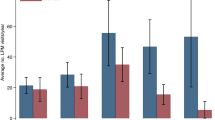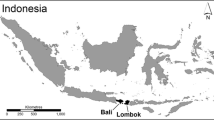Abstract
In 2015, human influenza surveillance identified a human infection with A/H9N2 in Dhaka, Bangladesh with evidence of exposure to a sick quail. We conducted in-depth interviews with household quail caregivers, pet bird retail shop owners, and mobile vendors, key informant interviews with pet bird wholesale shop owners, one group discussion with pet bird retail shop workers and unstructured observations in households, pet bird wholesale and retail markets, and mobile bird vendor’s travelling areas to explore quail rearing and selling practices among households, mobile vendors, and retail pet bird and wholesale bird markets in Dhaka. Every day, quail were supplied from 23 districts to two wholesale markets, and then sold to households and restaurants directly, or through bird shops and mobile vendors. All respondents (67) reported keeping quail with other birds in cages, feeding quail, cleaning feeding pots, removing quail faeces, slaughtering sick quail, and discarding dead quail. Children played with quail and assisted in slaughtering of quail. Most respondents (94%) reported rinsing hands with water only after slaughtering and disposing of wastes and dead quail. No personal protective equipment was used during any activities. Frequent unprotected contact with quail and their by-products potentially increased the risk of cross-species avian influenza virus transmission. Avian influenza surveillance in retail pet bird and wholesale bird markets, mobile vendors, and households may identify cases promptly and reduce the risk of virus transmission.

Similar content being viewed by others
References
Abdel-Ghafar AN, Chotpitayasunondh T, Gao Z, Hayden FG, Nguyen DH, de Jong MD, Naghdaliyev A, Peiris JS, Shindo N, Soeroso S, Uyeki TM (2008) Update on avian influenza A (H5N1) virus infection in humans. N Engl J Med 358(3):261–273
Alexander DJ (2000) A review of avian influenza in different bird species. Veterinary Microbiology 74(1):3–13
Bean B, Moore BM, Sterner B, Peterson LR, Gerding DN, Balfour HH Jr (1982) Survival of influenza viruses on environmental surfaces. J Infect Dis 146(1):47–51
Bertran K, Dolz R, Busquets N, Gamino V, Vergara-Alert J, Chaves AJ, Ramis A, Abad FX, Höfle U, Majó N (2013) Pathobiology and transmission of highly and low pathogenic avian influenza viruses in European quail (Coturnix c. coturnix). Veterinary Research 44(1):23–23
Brooks WA, Breiman RF, Goswami D, Hossain A, Alam K, Saha SK, Nahar K, Nasrin D, Ahmed N, El Arifeen S (2007) Invasive pneumococcal disease burden and implications for vaccine policy in urban Bangladesh. The American Journal of Tropical Medicine and Hygiene 77(5):795–801
Brooks WA, Alamgir AS, Sultana R, Islam MS, Rahman M, Fry AM, Shu B, Lindstrom S, Nahar K, Goswami D, Haider MS, Nahar S, Butler E, Hancock K, Donis RO, Davis CT, Zaman RU, Luby SP, Uyeki TM, Rahman M (2009) Avian influenza virus A (H5N1), detected through routine surveillance, in child, Bangladesh. Emerg Infect Dis 15(8):1311–1313
Chakraborty, A., et al., "Mild Respiratory Illness Among Young Children Caused by Highly Pathogenic Avian Influenza A (H5N1) Virus Infection in Dhaka, Bangladesh, 2011." The Journal of Infectious Diseases 2017:216 (Suppl 4).
Chen JM, Chen JW, Dai JJ, Sun YX (2007) A survey of human cases of H5N1 avian influenza reported by the WHO before June 2006 for infection control. Am J Infect Control 35(5):351–353
Fournie G, Guitian J, Desvaux S, Cuong VC, H. Dung do, D. U. Pfeiffer, P. Mangtani and A. C. Ghani, (2013) Interventions for avian influenza A (H5N1) risk management in live bird market networks. Proc Natl Acad Sci U S A 110(22):9177–9182
Gao R, Cao B, Hu Y, Feng Z, Wang D, Hu W, Chen J, Jie Z, Qiu H, Xu K, Xu X, Lu H, Zhu W, Gao Z, Xiang N, Shen Y, He Z, Gu Y, Zhang Z, Yang Y, Zhao X, Zhou L, Li X, Zou S, Zhang Y, Li X, Yang L, Guo J, Dong J, Li Q, Dong L, Zhu Y, Bai T, Wang S, Hao P, Yang W, Zhang Y, Han J, Yu H, Li D, Gao GF, Wu G, Wang Y, Yuan Z, Shu Y (2013) Human infection with a novel avian-origin influenza A (H7N9) virus. N Engl J Med 368(20):1888–1897
Gregory NG, Biswas PK, Chowdhury SH (2010) Recent Concerns about the Environment in Bangladesh. Outlook on Agriculture 39(2):115–120
Guan Y, Shortridge KF, Krauss S, Chin PS, Dyrting KC, Ellis TM, Webster RG, Peiris M (2000) H9N2 influenza viruses possessing H5N1-like internal genomes continue to circulate in poultry in southeastern China. J Virol 74(20):9372–9380
Guest, G., A. Bunce and L. Johnson (2006). "How Many Interviews Are Enough?:An Experiment with Data Saturation and Variability." 18(1): 59–82.
Hassan, Z., S. Afreen, S. Nasreen, A. Mamun, M. Rahman, M. Rahman, S. Luby, M. Kafi, s. Chowdhury, T. Azim, A. Iuliano, T. Uyeki, M. Rahman and K. Sturm-Ramirez (2016). Incidence and correlates of avian influenza virus RNA detection among a cohort of live bird market poultry workers, Bangladesh : 2012–2015.
Hayden F, Croisier A (2005) Transmission of avian influenza viruses to and between humans. J Infect Dis 192(8):1311–1314
Horimoto T, Kawaoka Y (2001) Pandemic threat posed by avian influenza A viruses. Clin Microbiol Rev 14(1):129–149
HSB (2011). "Outbreak of mild respiratory disease caused by H5N1 and H9N2 infections among young children in Dhaka, Bangladesh, 2011." Health and Science Bulletin 9 (2).
Iqbal M, Yaqub T, Mukhtar N, Shabbir MZ, McCauley JW (2013) Infectivity and transmissibility of H9N2 avian influenza virus in chickens and wild terrestrial birds. Veterinary Research 44(1):100
Islam, M. S., K. Sturm-Ramirez, S. Afreen, A. K. M. Khan, S. M. M. Hasan, A. Chakraborty, S. Luby, M. Rahman and E. Gurley (2013). Poultry-human interactions in a wholesale live bird market in Dhaka, Bangladesh: the potential for bird-to-human transmission of avian influenza viruses.
Kandeel A, Manoncourt S, el Kareem EA, Ahmed A-NM, El-Refaie S, Essmat H, Tjaden J, de Mattos CC, Earhart KC, Marfin AA, El-Sayed N (2010) Zoonotic Transmission of Avian Influenza Virus (H5N1), Egypt, 2006–2009. Emerging Infectious Diseases 16(7):1101–1107
Liu D, Shi W, Gao GF (2014) Poultry carrying H9N2 act as incubators for novel human avian influenza viruses. Lancet 383(9920):869
Lohiniva AL, Dueger E, Talaat M, Refaey S, Zaki A, Chisholm Horton K, Kandeel A (2013b) Poultry rearing and slaughtering practices in rural Egypt: an exploration of risk factors for H5N1 virus human transmission. Influenza Other Respir Viruses 7(6):1251–1259
Lohiniva, A.-L., E. Dueger, M. Talaat, S. Refaey, A. Zaki, K. Chisholm Horton and A. Kandeel (2013a). "Poultry rearing and slaughtering practices in rural Egypt: an exploration of risk factors for H5N1 virus human transmission." Influenza & Other Respiratory Viruses 7(6).
Maas R, Tacken M, Ruuls L, Koch G, van Rooij E, Stockhofe-Zurwieden N (2007) Avian Influenza (H5N1) Susceptibility and Receptors in Dogs. Emerging Infectious Diseases 13(8):1219–1221
Nasreen S, Khan SU, Luby SP, Gurley ES, Abedin J, Zaman RU, Sohel BM, Rahman M, Hancock K, Levine MZ, Veguilla V, Wang D, Holiday C, Gillis E, Sturm-Ramirez K, Bresee JS, Rahman M, Uyeki TM, Katz JM, Azziz-Baumgartner E (2015) Highly pathogenic Avian Influenza A(H5N1) virus infection among workers at live bird markets, Bangladesh, 2009–2010. Emerg Infect Dis 21(4):629–637
Nguyen TH, Than VT, Thanh HD, Hung VK, Nguyen DT, Kim W (2016) Intersubtype Reassortments of H5N1 Highly Pathogenic Avian Influenza Viruses Isolated from Quail. PLoS One11(2):e0149608
Oner AF, Bay A, Arslan S, Akdeniz H, Sahin HA, Cesur Y, Epcacan S, Yilmaz N, Deger I, Kizilyildiz B, Karsen H, Ceyhan M (2006) Avian influenza A (H5N1) infection in eastern Turkey in 2006. N Engl J Med 355(21):2179–2185
Padmawati S, Nichter M (2008) Community response to avian flu in Central Java, Indonesia. Anthropol Med 15(1):31–51
Peacock, T. H. P., J. James, J. E. Sealy and M. Iqbal (2019). "A Global Perspective on H9N2 Avian Influenza Virus." Viruses 11(7).
Perez DR, Lim W, Seiler JP, Yi G, Peiris M, Shortridge KF, Webster RG (2003) Role of Quail in the Interspecies Transmission of H9 Influenza A Viruses: Molecular Changes on HA That Correspond to Adaptation from Ducks to Chickens. Journal of Virology 77(5):3148–3156
Rahman M, Mangtani P, Uyeki TM, Cardwell JM, Torremorell M, Islam A, Samad MA, Muraduzzaman AKM, Giasuddin M, Sarkar S, Alamgir ASM, Salimuzzaman M, Flora MS (2020) Evaluation of potential risk of transmission of avian influenza A viruses at live bird markets in response to unusual crow die-offs in Bangladesh. Influenza Other Respir Viruses 14(3):349–352
Rimi NA, Sultana R, Ishtiak-Ahmed K, Khan SU, Sharker MA, Uz Zaman R, Azziz-Baumgartner E, Gurley ES, Nahar N, Luby SP (2014) Poultry slaughtering practices in rural communities of Bangladesh and risk of avian influenza transmission: a qualitative study. Ecohealth 11(1):83–93
Ryan, G. W. and H. R. Bernard (2003). "Techniques to Identify Themes." 15(1): 85–109.
Shanmuganatham K, Feeroz MM, Jones-Engel L, Walker D, Alam S, Hasan M, McKenzie P, Krauss S, Webby RJ, Webster RG (2014) Genesis of avian influenza H9N2 in Bangladesh. Emerg Microbes Infect 3(12):e88
Sultana, R., N. Nahar, N. A. Rimi, S. Azad, M. S. Islam, E. S. Gurley and S. P. Luby (2012). "Backyard poultry raising in Bangladesh: a valued resource for the villagers and a setting for zoonotic transmission of avian influenza. A qualitative study." Rural Remote Health 12: 1927.
Turner JC, Feeroz MM, Hasan MK, Akhtar S, Walker D, Seiler P, Barman S, Franks J, Jones-Engel L, McKenzie P, Krauss S, Webby RJ, Kayali G, Webster RG (2017) Insight into live bird markets of Bangladesh: an overview of the dynamics of transmission of H5N1 and H9N2 avian influenza viruses. Emerg Microbes Infect 6(3):e12
Van Kerkhove MD, Mumford E, Mounts AW, Bresee J, Ly S, Bridges CB, Otte J (2011) Highly pathogenic avian influenza (H5N1): pathways of exposure at the animal-human interface, a systematic review. PLoS One 6(1):e14582
Vong S, Ly S, Van Kerkhove MD, Achenbach J, Holl D, Buchy P, Sorn S, Seng H, Uyeki TM, Sok T, Katz JM (2009) Risk factors associated with subclinical human infection with avian influenza A (H5N1) virus–Cambodia, 2006. J Infect Dis 199(12):1744–1752
World Health, O (2006) Review of latest available evidence on potential transmission of avian influenza (H5N1) through water and sewage and ways to reduce the risks to human health. Geneva: World Health Organization
World Health Organization (2015) Influenza at the human-animal interface: Summary and assessment as of 4 September 2015. Geneva: Switzerland, World Health Organization, pp 1–3
World Health Organization (2007). "Update: WHO-confi rmed human cases of avian infl uenza A(H5N1) infection, 25 November 2003–24 November 2006." Weekly Epidemiological Record 6: 41–47.
Xu KM, Li KS, Smith GJ, Li JW, Tai H, Zhang JX, Webster RG, Peiris JS, Chen H, Guan Y (2007) Evolution and molecular epidemiology of H9N2 influenza A viruses from quail in southern China, 2000 to 2005. J Virol 81(6):2635–2645
Zeng X, Liu M, Zhang H, Wu J, Zhao X, Chen W, Yang L, He F, Fan G, Wang D, Chen H, Shu Y (2017) Avian influenza H9N2 virus isolated from air samples in LPMs in Jiangxi, China. Virology Journal 14(1):136–136
Zhang RS, Ou XH, Song KY, Yuan J, Chen TM, Xiao S, Sun BC (2012) Risk related to the transmission of H5N1 subtype avian influenza virus in the environment of poultry markets in Changsha, China. Zhonghua Liu Xing Bing Xue Za Zhi 33(8):768–773
Zhou L, Liao Q, Dong L, Huai Y, Bai T, Xiang N, Shu Y, Liu W, Wang S, Qin P, Wang M, Xing X, Lv J, Chen RY, Feng Z, Yang W, Uyeki TM, Yu H (2009) Risk factors for human illness with avian influenza A (H5N1) virus infection in China. The Journal of Infectious Diseases 199(12):1726–1734
Author information
Authors and Affiliations
Corresponding author
Rights and permissions
Springer Nature or its licensor (e.g. a society or other partner) holds exclusive rights to this article under a publishing agreement with the author(s) or other rightsholder(s); author self-archiving of the accepted manuscript version of this article is solely governed by the terms of such publishing agreement and applicable law.
About this article
Cite this article
Hasan, S.M.M., Sturm-Ramirez, K., Kamal, AH.M. et al. Quail Rearing Practices and Potential for Avian Influenza Virus Transmission, Bangladesh. EcoHealth 20, 167–177 (2023). https://doi.org/10.1007/s10393-023-01643-w
Received:
Revised:
Accepted:
Published:
Issue Date:
DOI: https://doi.org/10.1007/s10393-023-01643-w




